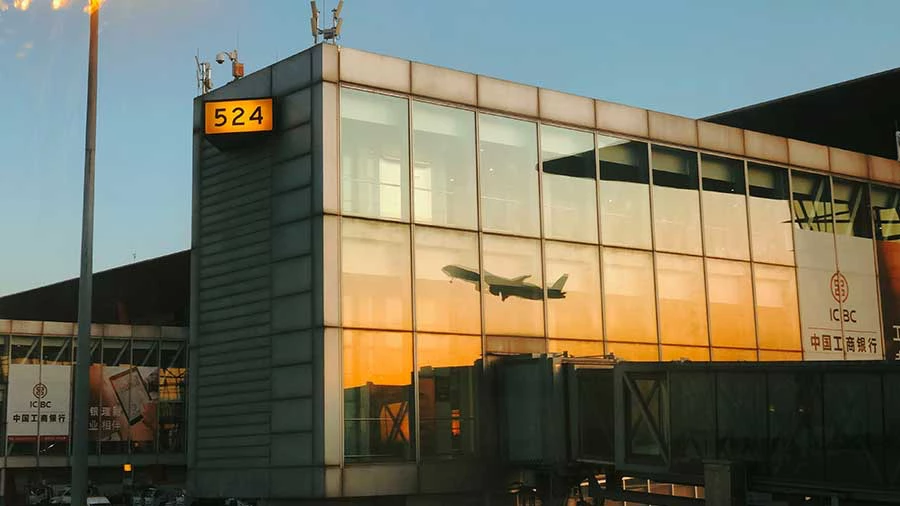Salary and Wages
What is the minimum wage in China?
Minimum wages in China continue to rise.
As of February 19, 2024, Shanghai has the highest monthly minimum wage among 31 provinces (RMB 2,690/US$370 per month), and Beijing has the highest hourly minimum wage (RMB 26.4/US$3.7 per hour). 21 regions – Anhui, Beijing, Chongqing, Fujian, Gansu, Guangdong (including Shenzhen), Hainan, Hebei, Henan, Hubei, Jiangsu, Jiangxi, Liaoning, Ningxia, Shaanxi, Shandong, Shanghai, Sichuan, Tianjin, and Zhejiang – have surpassed the RMB 2,000 (US$275) mark in their monthly minimum wage standards.
At the lower end of the wage spectrum, Jilin and Xinjiang’s minimum wage level (RMB 1,540 per month) is slightly higher than that in Heilongjiang (RMB 1,450 per month).
In 2023, 14 provinces including Anhui, Beijing, Guangxi, Guizhou, Gansu, Hainan, Hebei, Qinghai, Shaanxi, Shandong, Shanghai, Shanxi, Tianjin, and Yunnan have raised their minimum wage standards.
Coming into 2024, the new minimum wage standards of Hennan, Jiangsu, and Zhejiang took effect from January 1. Hubei’s new minimum wage standards took effect from February 1. Ningxia’s new minimum wage standard took effect from March 1, 2024. Jiangxi’s new minimum wage standard took effect from April 1, 2024. Liaoning’s new minimum wage standards will come into effect on May 1.
According to China’s Provisions on Minimum Wage, the legal minimum wage refers to the minimum labor remunerations that shall be paid by the employers to the employees under the precondition that the employee has provided normal labor within the promissory working hours or within the working hours that is prescribed in the labor contracts.
In general, the minimum wage standards appear in two forms:
- The monthly minimum wage standard; and
- The hourly minimum wage standard.
The monthly minimum wage standard applies to full-time employees, while the hourly minimum wage standard applies to non-fulltime employees, such as part-time and temporary employees.
The minimum wage is the basic wage that employers must pay their employees, which excludes overtime pay, night shift allowance, summer high-temperature allowance, the special working environment allowance, and subsidies for meals, transportation, and housing.
Nevertheless, China’s minimum wage standards do include the social insurance premiums and housing fund contributions paid by employees in most regions. Here, the employee’s take-home pay is lower than the corresponding minimum wage standard in these regions. Only a few regions, such as Shanghai, clearly stipulate in their local rules that their local minimum wage standards exclude social insurance premiums and housing fund contributions.
Local governments in China are generally required to update their minimum wages every few years but have the flexibility to adjust wages according to local conditions.
Most provinces set different classes of minimum wage levels for different areas based on the level of development and cost of living in that region. For example, the provincial capital and the province's most developed cities have a higher minimum wage class, whereas smaller cities and rural areas have a lower wage class.
Minimum wage in China guide
A complete guide to China’s minimum wages can be found below.
|
Minimum Wages in China ** |
|||||
|
Province/region |
Class |
City/urban area* |
Monthly minimum wage (RMB) |
Hourly minimum wage (RMB) |
Effective date |
|
Anhui** |
A |
Hefei |
2,060 |
21 |
2023.3.1 |
|
B |
Bengbu Huaibei Huainan Xuancheng |
1,930 |
20 |
||
|
C |
Anqing Fuyang Huangshan |
1,870 |
19 |
||
|
D |
Certain county-level cities |
1,780 |
18 |
||
|
Beijing |
– |
– |
2,420 |
26.4 |
2023.09.01 |
|
Chongqing |
A |
Certain suburban districts and counties |
2,100 |
21 |
2022.04.01 |
|
B |
Certain suburban districts and counties |
2,000 |
20 |
||
|
Fujian |
A |
Xiamen |
2,030 |
21 |
2022.04.01 |
|
B |
Fuzhou Quanzhou Pingtan FTZ |
1,960 |
20.5 |
||
|
C |
Zhangzhou Ningde |
1,810 |
19 |
||
|
D |
Sanming Nanping |
1,660 |
17.5 |
||
|
Gansu |
A |
Lanzhou Jiayuguan Yumen Dunhuang |
2,020 |
21 |
2023.11.01 |
|
B |
Hezuo |
1,960 |
20.5 |
||
|
C |
Linxia |
1,910 |
20 |
||
|
D |
Certain county-level cities |
1,850 |
19.5 |
||
|
Guangdong |
A |
Guangzhou |
2,300 |
22.2 |
2021.12.01 (Shenzhen’s minimum wage standards were effective since January 1, 2022) |
|
Shenzhen |
2,360 |
||||
|
B |
Zhuhai Foshan Dongguan Zhongshan |
1,900 |
18.1 |
||
|
C |
Shantou Huizhou Jiangmen Zhanjiang Zhaoqing |
1,720 |
17 |
||
|
D |
Other Cities |
1,620 |
16.1 |
||
|
Guangxi |
A |
Nanning Liuzhou Guilin Wuzhou Beihai Fangchenggang Qinzhou |
1,990 |
20.1 |
2023.11.01 |
|
B |
Yulin Baise Guigang |
1,840 |
18.6 |
||
|
C |
Certain county-level cities |
1,690 |
17 |
||
|
Guizhou |
A |
Guiyang Qingzhen Chishui |
1,890 |
19.6 |
2023.02.01 |
|
B |
Kaiyang |
1,760 |
18.3 |
||
|
C |
Xifeng Xiuwen |
1,660 |
17.2 |
||
|
Hainan |
A |
Haikou Sanya Yangpu Economic Development Zone |
2,010 |
17,9 |
2023.12.01 |
|
B |
Qionghai Danzhou Sansha |
1,850 |
16.3 |
||
|
Hebei** |
A |
Shijiazhuang Baoding Langfang Tangshan Qinghuangdao Cangzhou Handan |
2,200 |
22 |
2023.01.01 |
|
B |
Xintai Hengshui Zhangjiakou Chengde |
2,000 |
20 |
||
|
C |
Certain country-level cities |
1,800 |
18 |
||
|
Heilongjiang |
A |
Harbin (except certain districts) Daqin |
1,860 |
18 |
2021.04.01 |
|
B |
Qiqihar Mudanjiang Jiamusi Suihua |
1,610 |
14 |
||
|
C |
Heihe Yinchun Daxinganling |
1,450 |
13 |
||
|
Henan |
A |
Zhengzhou Luoyang Anyang |
2,100 |
20.6 |
2024.01.01 |
|
B |
Kaifeng Puyang Nanyang |
2,000 |
19.6 |
||
|
C |
Weihui |
1,800 |
17.6 |
||
|
Hubei |
A |
Wuhan |
2,210 |
22 |
2024.02.01 |
|
B |
Huangshi Yichang Huanggang Tianmen |
1,950 |
19.5 |
||
|
C |
Certain county-level cities |
1,850 |
18.5 |
||
|
Hunan*** |
A |
Changsha Zhuzhou |
1,930 |
19 |
2022.04.01 |
|
B |
Xiangtan Yueyang Changde |
1,740 |
17 |
||
|
C |
Zhangjiajie Yongzhou Yiyang |
1,550 |
15 |
||
|
Inner Mongolia |
A |
Hohhot Erenhot |
1,980 |
20.8 |
2021.12.01 |
|
B |
Hulunbuir Xilinhot |
1,910 |
20.1 |
||
|
C |
Bayanur Ulanhot |
1,850 |
19.5 |
||
|
Jiangsu |
A |
Nanjing Suzhou Zhenjiang Changzhou Wuxi |
2,490 |
24 |
2024.01.01 |
|
B |
Yangzhou Nantong Lianyungang |
2,260 |
22 |
||
|
C |
Suqian |
2,010 |
20 |
||
|
Jiangxi |
A |
Nanchang |
2,000 |
20 |
2024.04.01 |
|
B |
Jiujiang Shangrao Pingxiang Ji’an |
1,870 |
18.7 |
||
|
C |
Yichun Fuzhou |
1,740 |
17.4 |
||
|
Jilin |
A |
Changchun |
1,880 |
19 |
2021.12.01 |
|
B |
Jilin Songyuan Yanji Huichun |
1,760 |
18 |
||
|
C |
Siping Liaoyuan Tonghua Baishan Qianguo county Fusong county |
1,640 |
17 |
||
|
D |
Baicheng and the rest counties (cities) |
1,540 |
16 |
||
|
Liaoning |
A |
Dalian Shenyang |
2,100 |
21 |
2024.05.01 |
|
B |
Anshan Dandong Fushun Yingkou |
1,900 |
19 |
||
|
C |
Chaoyang Fuxin |
1,700 |
17 |
||
|
Ningxia |
A |
Yinchuan Shizuishan |
2,050 |
20 |
2024.03.01 |
|
B |
Lingwu Wuzhong Zhongwei |
1,900 |
18 |
||
|
Qinghai** |
– |
– |
1,880 |
18 |
2023.02.01 |
|
Shaanxi |
A |
Xi’an |
2,160 |
21 |
2023.05.01 |
|
B |
Baoji Hancheng Hanzhong Tongchuan Weinan Xianyang Yan’an Yulin |
2,050 |
20 |
||
|
C |
Ankang Shangluo |
1,950 |
19 |
||
|
Shandong |
A |
Dongying Jinan Qingdao Weifang Weihai Yantai Zibo |
2,200 |
22 |
2023.10.01 |
|
B |
Binzhou Jinning Laiwu Linyi Rizhao Tai’an Zaozhuang |
1,900 |
19 |
||
|
C |
Dezhou Heze Liaocheng |
1,820 |
18 |
||
|
Shanghai** |
– |
– |
2,690 |
24 |
2023.07.01 |
|
Shanxi** |
A |
Most districts under Taiyuan; some districts and county-level cities under Datong, Changzhi, Jincheng, Shuozhou, Yizhou, Jinzhong, Linfen, Lvliang, and Yuncheng |
1,980 |
21.3 |
2023.01.01 |
|
B |
Most county-level cities under Datong, Changzhi, Shuozhou, Yizhou, Jinzhong, Linfen, and Yuncheng |
1,880 |
20.2 |
||
|
C |
Other county-level cities |
1,780 |
19.1 |
||
|
Sichuan*** |
A |
Chengdu |
2,100 |
22 |
2022.4.01 |
|
B |
Certain districts under the jurisdiction of Chengdu |
1,970 |
21 |
||
|
C |
Other districts and county-level cities |
1,870 |
20 |
||
|
Tianjin |
– |
– |
2,320 |
24.4 |
2023.11.01 |
|
Tibet |
– |
– |
1,850 |
18 |
2021.05.25 |
|
Xinjiang |
A |
Karamay Taxkorgan Tajik Autonomous Region |
1,900 |
19 |
2021.04.01 |
|
B |
Changji Shixenze Urumqi Wujyachu |
1,700 |
17 |
||
|
C |
Aksu Arai Kashgar Korla Kumul Tumxuk Turpan Wusu |
1,620 |
16.2 |
||
|
D |
Atlay Atush Bortala Dacheng Gulja Kuytun |
1,540 |
15.4 |
||
|
Yunnan |
A |
Kunming |
1,990 |
19 |
2023.10.01 |
|
B |
Certain counties under the jurisdiction of Kunming |
1,840 |
18 |
||
|
C |
Other county-level cities |
1,690 |
17 |
||
|
Zhejiang*** |
A |
Hangzhou Ningbo Wenzhou |
2,490 |
24 |
2024.01.01 |
|
B |
Huzhou Jinhua Shaoxing Taizhou |
2,260 |
22 |
||
|
C |
Lishui Zhoushan |
2,010 |
20 |
||
|
Notes: *Certain provinces set minimum wage standards at the county or district level. The cities listed in the table are examples and are not exhaustive. **Highlighted areas denote jurisdictions that updated their minimum wage in 2023. The monthly minimum wage is for full-time employment, while the hourly minimum wage is for part-time employment. *** Hunan, Zhejiang, and Sichuan provinces allow each city to decide which minimum wage level to apply. The cities given as examples are, therefore, subject to change. |
|||||
Salary components
Base salary and bonus
The employee’s base salary needs to be stated in the labor contract. Employers can also include some one-off payments. For instance, many companies make a 13th-month salary payment to their employees around Chinese New Year.
Companies should exercise caution when including payments other than the base salary in the labor contract, as they will be legally obligated to make the payment. Employers can instead choose to pay this amount as an annual bonus. In this case, the employer can explain to staff that the company generally pays this amount under normal business circumstances but is not obligated to do so if performance is below expectations.
Base salary is the fixed monthly amount that the company guarantees to pay the employee.
The company can also pay bonuses at various points throughout the year. In this case, please note that under Chinese IIT law, employees can use a special tax treatment for a one-off annual bonus to reduce their tax burden (more below).
Allowances
The Chinese Tax Bureau allows foreign staff (including those from Hong Kong, Macau, and Taiwan) to deduct certain “allowances” before calculating the tax burden on their monthly salary, provided that:
- In the employment contract (and sometimes also in a board resolution depending on the location of the company), there should be a clear reference to the amount being paid to the employee under the title of each specific allowance; and
- Each month, the employee should produce evidence to show the company that this money was indeed spent on the services described in the contract; this is done using the ubiquitous “fapiao”, or official invoice, which should be received whenever an official monetary transaction is completed in China, valid till December 31, 2023.
The following allowances are deductible:
- Meal allowance;
- Housing allowance;
- Laundry allowance;
- Children’s education allowance; and
- Home visit allowance.
How much of a foreign employee’s salary can be allocated to allowances is not clearly defined by the law, which stipulates that the allowances should be “reasonable.” In practice, many companies adopt a proportion of 30 percent of the total salary of the foreign employee and classify this portion as allowances. There is always the possibility that the tax office will challenge the company on this issue, so we recommend that the proportion of allowance should be set at or below this level.
Overtime defined by Chinese Law
For employees who work beyond eight hours a day, the employer should pay a minimum of 150 percent of the employee’s basic salary for overtime worked. However, companies can structure over time in several different ways. For example, a company can adopt either the Comprehensive Working Hour system or the Flexible Working Hour system – both of which usually do not entitle employees to typical overtime payments – but government approval must be sought for implementation.
For an employee to work overtime, employers must consult with the employees and labor unions first. As stated above, if employees do work overtime, they must be paid 1.5 times their usual wage. Employers are not required to pay overtime compensation to high-ranking managers. If employees work on a weekend, they are to be paid double their regular wage or get an additional day off during the week. Finally, if employees work on a statutory holiday, they must be paid three times their normal wage.
Overtime Payments & Regulations
Overtime is regulated by the People’s Republic of China Labor Law. Overtime is paid differently depending on the work hour system adopted by the employer, by either standard work hours, comprehensive work hours, or non-fixed work hours. The standard work hour system requires that an employee’s normal working day should not exceed eight hours, that the normal working week not exceed 40 hours, and that each employee should be guaranteed at least one rest day per week. The majority of white-collar jobs in China now operate according to this model.
The standard work-hour system
Working hours in the standard work hour system are subject to the usual overtime rates:
- For overtime work, not less than 150 percent of the normal wage shall be paid;
- For work on a rest day, and where such rest days cannot be postponed and taken at another time, not less than 200 percent of the normal wage shall be paid;
- For work on an official public holiday, not less than 300 percent of the normal wage shall be paid.
| Overtime Payment under the Standard Work Hour System | |
| Time of work | Percentage of hourly salary |
| Extra hours worked on weekdays | 150% |
| Hours worked on weekends | 200% |
| Hours worked on public holidays | 300% |
The standard workhour system is suitable for most types of jobs in China.
The comprehensive work-hour system
In this workhour system, overtime is applicable for hours worked above the standard set per cycle. Such rates match those of the standard work hour system for extra hours worked and work on public holidays. However, no rest day is outlined under this system.
| Overtime Payment under the Comprehensive Work Hour System | |
| Time of work | Percentage of hourly salary |
| Extra hours worked outside of normal shift | 150% |
| Extra hours worked on public holidays* | 300% |
| *This higher rate applies even if the standard shift for the worker is scheduled on a public holiday. | |
Before a company can implement this system, it must first submit its plan to the local labor bureau and get approval.
Once this system is in place, the employee’s work hours will be calculated over a “comprehensive calculation period” (e.g., weekly, monthly, quarterly, or yearly). In contrast to the standard workhour system, employees on this system may work for up to 36 hours more before overtime rates apply. This system is employer-friendly because local labor bureaus will define the upper limits for employee’s monthly work hours.
The non-fixed (flexible) work-hour system
The non-fixed work hour system accommodates employees whose working hours are impractical to measure. Employees on such a work-hour system are paid as a salaried employee. This salary is a set amount paid per period, often monthly.
No overtime cost is associated with the non-fixed work-hour system. Employers are required to observe appropriate work and rest schedules, though it is ultimately up to the employer’s discretion.
This type of work hour system and payment method makes sense when outcomes trump specific hours spent at work. Such roles include:
- Senior management;
- Salespeople; and
- Employees in the transport, warehousing, and railway sectors.
Non-fixed working hours cannot be applied to employees in low-level management or non-management roles unless they fall under one of the following work roles:
- Off-site sales personnel;
- Personnel permanently based out of town;
- Long-distance transportation personnel;
- Non-production on-duty personnel; or
- Others in special work positions may arrange their own work and rest schedules.
The minimum contribution base of the housing fund in many cities is the same as the local minimum wage standards. The change in the minimum wage means the adjustment of the housing fund contribution base in the following months. The ceiling of the housing fund contribution base is usually three times the local average monthly salary of employees in the previous year, and the floor of the housing fund contribution base is usually the same as the local minimum wage standard. However, the adjustment of the housing fund contribution base is not always in sync with the change in the minimum wage standard. For example, to reduce labor costs and help struggling businesses survive in the wake of the COVID-19 pandemic, the Shanghai government decided that its minimum contribution base of the housing fund in 2021 will follow the 2020 minimum wage standard rather than the 2021 one. Companies are suggested to pay attention to announcements from the local government. Article 20 of the Labor Contract Law stipulates that the wage amount of a worker during their probation period shall not be less than the lowest wage amount for the same job position in the employer’s organization or 80 percent of the wage amount agreed in the labor contract. The wage amount shall not be less than the minimum wage standard of the locality of the employer. Therefore, the wages paid by the enterprise to the probationary employees who are on regular attendance should not be lower than the corresponding standard amount. Different cities have different standards of sick leave payments. But one universal rule is that the sick leave wage shall not be lower than 80 percent of the local minimum wage, according to the Opinions on Several Issues concerning the Implementation of the Labor Law of the People’s Republic of China (Lao Bu Fa [1995] No. 309). Correspondingly, the minimum sick leave wage standard shall be adjusted with the increase of the local minimum wage standard. Article 27 of the Implementation Regulations for the Labor Contract Law of the People’s Republic of China stipulates that the monthly salary used for calculating the severance payment to an employee shall be no less than the local minimum wage standard. If the average pay of the employee in the 12 months before the termination of the labor contract is less than the local minimum wage standard, the local minimum wage standard shall be used to calculate the severance. Companies may decide to suspend their businesses or production in the wake of internal or external difficulties, such as during lockdowns caused by the pandemic. As per relevant provisions on wage payment during the period of suspension of production: Referring to the regulations of Zhejiang Province, Hubei Province, and Shaanxi Province, the employer is required to pay a living allowance of 70-80 percent of the local minimum wage. According to Article 58 of the Labor Contract Law, during the period in which a dispatched worker is not assigned any work duties, the labor dispatch agency shall pay the worker remuneration on a monthly basis pursuant to the local minimum wage standard. Article 35 and Article 36 of the Regulations on Work-Related Injury Insurance stipulate that where a worker who sustained a work injury is certified grade 1 to grade 6 disability, they shall enjoy corresponding benefits, such as a one-off disability subsidy and monthly disability allowance covered by the work-related injury insurance fund in accordance with the disability grading, among other factors. Regarding the monthly disability allowance, the injured workers shall be paid at 60-90 percent of their average monthly wage in the 12 months before the injury. Where the amount of disability allowance calculated is less than the local minimum wage standard, the shortfall shall be covered by the work-related injury insurance fund. The Guiding Opinions of the Ministry of Human Resources and Social Security and the Ministry of Finance on Adjusting the Criteria for Unemployment Insurance Benefits (Ren She Bu Fa [2017] No.71) stipulates that: With the development of the society and economy, all provinces shall, on the premise of ensuring a sustainable fund, appropriately improve the level of unemployment security step by step to improve the unemployment insurance benefit criteria to 90 percent of the local minimum wage standard. In practice, unemployment insurance benefits are usually paid at 70-80 percent of the local minimum wage standard.
How Do Rising Minimum Wages Effect Labor Costs in China?
Housing fund
Wages during the probation period
Wages during sick leave
Severance payment
Wages during the suspension of work or production
Wages of dispatched employees
Wages of injured workers
Unemployment insurance benefits














